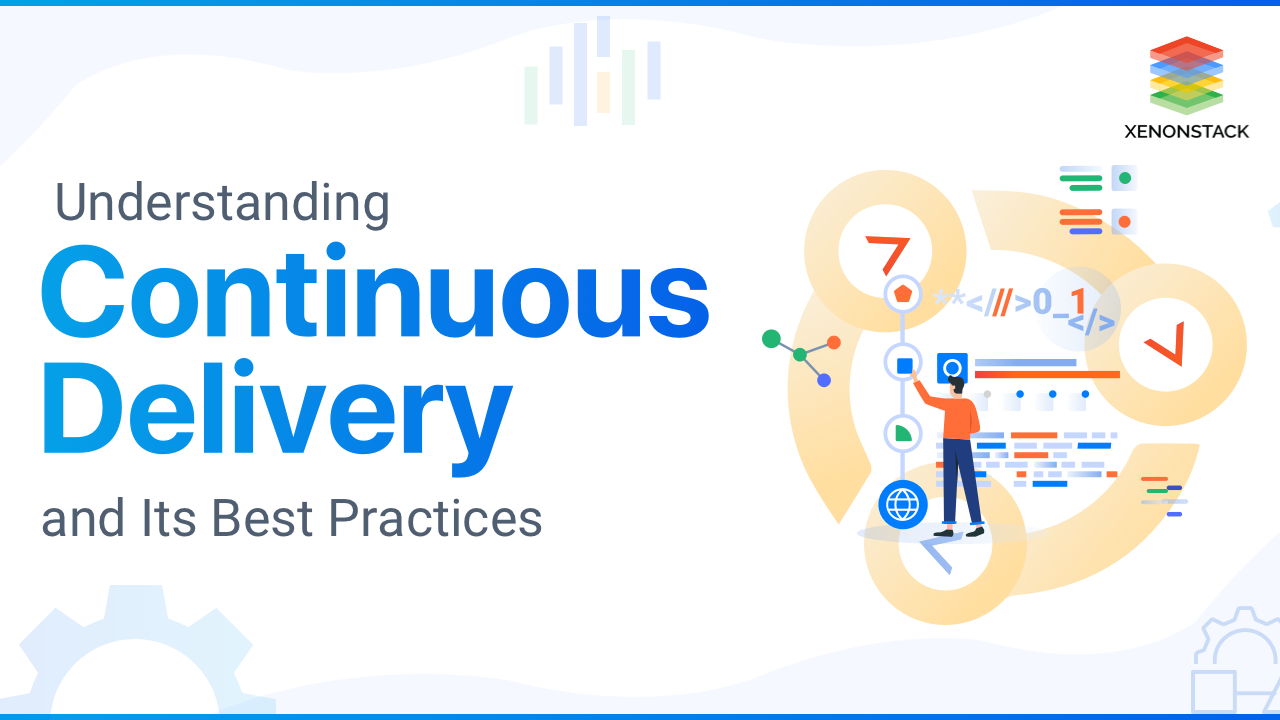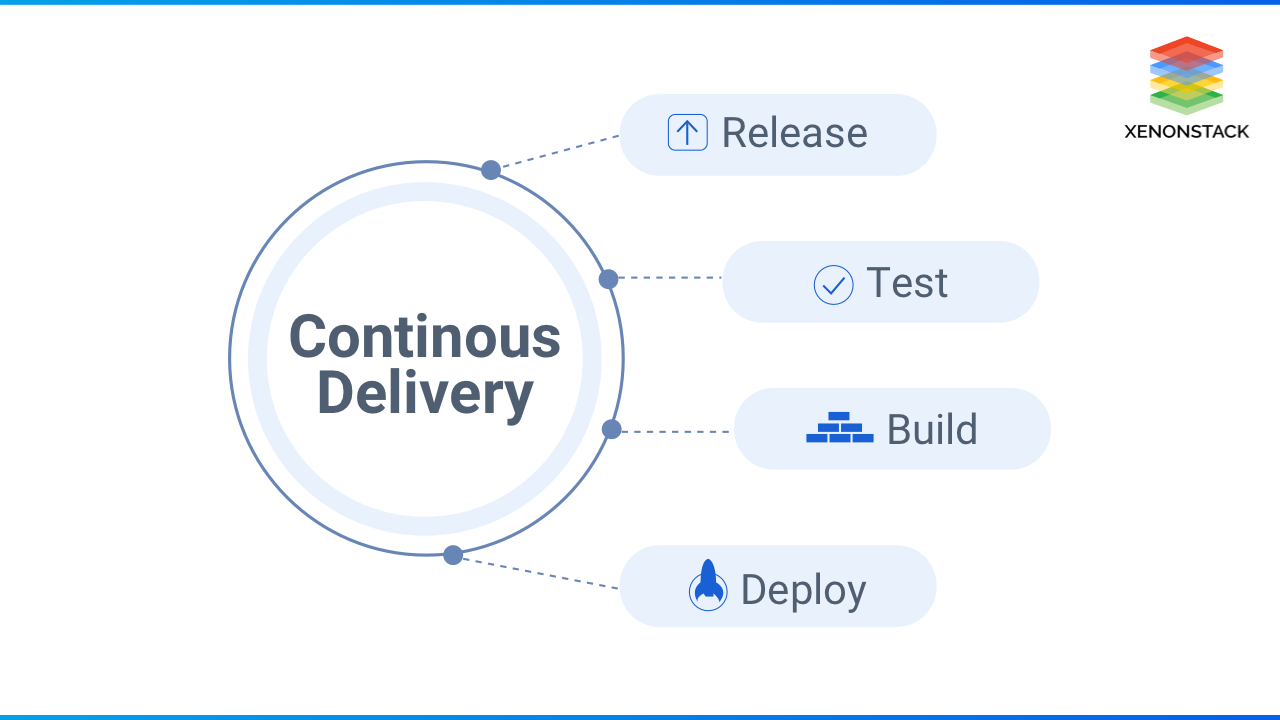
What is Continuous Delivery?
Continuous Delivery (CD) processes to build, test, configure and ready to deploy from a build to the production environment at any time. This process is automated and is an extension of continuous integration. The purpose of CD is to keep production up to date by integrating the latest code available in version control or with any required package as soon as possible. Note: It is possible to have Continuous Integration without CD, but it's challenging to have Continuous Delivery without Continuous Integration.
A strategy in which the development teams ensure the software is reliable to release at any time.” Click to explore about, Continuous Integration and Continuous Delivery
Why Continuous Delivery Matters?
- The software release is getting slower than usual.
- Ensure products quality is up to the mark along with the speedy delivery to users.
- Provides online services (as it's not compulsory).
- Build new products at a faster pace and release to improve quality.
- Reduce vulnerabilities in products, by releasing security patches often.
Why do we need Continuous Delivery and DevOps?DevOps is a process and balanced organizational approach for improving collaboration and communication between development and operations. It is the process of redesigning and finding new ways for faster and Reliable Delivery.
How Continuous Delivery Works?
Continuous Delivery follows the concept of Continuous Integration to the next steps. Different modules of a software system are integrated to ensure code is always deployable to production. It has an automated build, an automated test suite, and an automated process to deliver software to production. Using the automated process, it deploys software within minutes. The CD is the core principle of DevOps. It includes predictable deployments, reduced risk with new features, shorter feedback cycles with the customer, and overall higher software quality.How to adopt Continuous Delivery?
Organizations that integrate continuous delivery in their process make mistakes, such as assuming CD as an end-state or a goal or spending a lot of time worrying about what products to use. So, how do they adopt it in their organization? Below are some points to be considered during adaptation -
- First Organization's Architecture.
- What Culture followed?
- Follow the principle of Continuous Integration and Deployment, and make CI process as efficient as possible.
- Automate the testing process and add manual testing, too, if needed.
- Automate the build and deploy task.
How Continuous Delivery adoption is successful?
Everything is relative. Define success parameters like expectations after adopting Continuous Delivery in the organization. That parameter obviously should be in the domain, which means we can't define "we live more as the parameter," right? Set the parameters more carefully and thoughtfully because, in the end, everyone will deduce the result by these defined threshold values.
What are the Continuous Delivery adoption challenges?
Everything has some price, and the same goes for CD integration; below are some challenges -- The automation price is not small.
- It's challenging to adopt the CD if someone is not following the Microservices architecture.
- Organizational culture and architecture.
Features of Continuous Delivery Platform
-
Adaptive and Secure (DevOps Delivery Pipeline)—DevOps Infrastructure is agile and flexible, supporting different workflows and modern data centres with technologies from various decades.
-
MicroServices (Serverless Computing): Provision, Configure, and Manage Infrastructure to enable collaboration and automation for faster and more reliable software delivery.
-
Integrations: Plug N Play Integrations support
-
Cloud Integration— 'On-Premises' Infrastructure with the help of Hybrid Cloud Infrastructure with Leading Public Cloud Providers like AWS, Google Cloud, Microsoft Azure, OpenStack, and more.
-
Database Integration - Supported runbooks to provision databases in your technology stack, such as Cassandra, MongoDB, SQL Server, Elastic Search, MySQL, Oracle, and more.
-
Languages and Frameworks - Multiple languages and the industry's leading framework support include Golang, Python, C++, JavaScript, .NET, Java, C, and more.
DevSecOps Platform for Automating, Monitoring, and Analyzing Application Delivery. It accelerates Data-Driven Application Delivery with proper visibility and security.
Continuous Integration and Continuous Delivery mechanisms are applied to test server configuration, server image building, environment provisioning, and the mixture of environments.” Click to explore, How to Implement Infrastructure as Code in CI/CD Pipeline?
What are the benefits of adopting Continuous Delivery?
- The software is delivered with fewer bugs and lower risk.
- Improve Developer Productivity and Efficiency.
- The software Release Process is automated.
- Finding bugs becomes more accessible, and so does addressing them.
- Improve Customer Satisfaction.

What are the best practices for Continuous Delivery?
So, any organization that is willing to or is already practising CD should know the best practices to make CD successful and more efficient. Below are some points someone should consider -
-
An organization should follow the trend of "Build your binaries only once."
-
Deploy the same way to all environments, whether production, user acceptance testing, or any other.
-
One should do the smoke test of deployments.
-
Continuous Delivery should follow Instantaneous propagation, which means the CD should be the ongoing process of build, test, and release (the most common one).
-
The CD should include the Database.
-
Firstly, deploy to a similar environment to the production one before deploying to production.
-
Implement GitOps.
-
Monitor the CD pipeline and restart the pipeline once any stage fails.
-
Automate everything.
NOTE - The organization should take care of security and try to make the pipeline as secure as possible, such as following the Pull-type pattern rather than the push-type.
What are the best Continuous Delivery Tools?
Codefresh
Codefresh is a modern CI/CD toolchain based on GitOps and Argo. It takes full advantage of the open-source Argo toolkit. It provides essential enterprise features such as a unified user interface, a single pane for cloud-scale management, enterprise-grade secure execution, and the ability to end-to-end checkout and single sign-on across multiple apps.
FluxCD
FluxCD is an open-source continuous delivery engine designed for Kubernetes. It automates the deployment and management of applications in a Kubernetes cluster. FluxCD uses GitOps, a Git-centric approach to CDs, to manage the desired state of clusters in Git and automatically match the actual state to the cluster.
Spinnaker
Spinnaker is an open-source, multi-cloud CD platform designed to make it easy to reliably and quickly release software changes. Spinnaker provides a pipeline-based CD approach that allows developing teams to automate and visualize the entire software delivery process, from building and testing to deployment and monitoring.
Argo CD
Argo CD is an open-source CD tool that uses GitOps to manage and deploy an application on Kubernetes at scale. It is designed to be highly scalable and works by continuously synchronizing the desired application state as defined in Git with the live state of the cluster.
GoCD
GoCD is an open-source CD engine that provides a pipeline-based software distribution approach. It helps organizations automate and streamline the software delivery process, from creating and testing code changes to deploying them to production.
Harness
Harness is a continuous deployment and delivery (CI/CD) platform that helps organizations automate processes of delivering software changes to production. It provides features such as continuous integration, automation of the deployment process, and continuous updates.
GitLab
GitLab is a web-based Git repository manager that provides continuous integration, source code management (SCM), and more. The platform helps manage the entire software development lifecycle (SDLC), from planning to implementation. With GitLab, teams can manage and host their source code repositories, track bugs, and collaborate with other teams on their projects.
Azure DevOps
Azure DevOps provides features for different roles on the DevOps team, including developers, IT, and project managers. Users can access these features through an IDE client or a web browser. This suite offers two deployment types: Azure DevOps Services for the cloud and Azure DevOps Server for on-premises deployments.
Continuous Delivery Technology Solutions

-
Essentials (For Startups)—We take care of a startup's basic needs for hassle-free IT and Application Lifecycle Operations.
-
Productivity (For DevOps Team) - Productivity is best suited for workloads that are planning or already in production, and looking forward to adopting the DevOps Approach.
-
Enterprise (Enterprise Stack) - Create a single file for your project to describe the type of machine you want, the software that needs to be installed, and how you want to access the machine.
How can XenonStack help you?
By incorporating DevOps Culture into your organization, you can deploy your code 30 times more frequently than your competitor with less than 50% of deployment failures. By adopting DevOps culture, you can collaborate with your team, which is composed of cross-functional team members, including developers, QA, DBAs, Business Analysts, Operation Engineers, and so forth, which deliver many benefits such as continuous software delivery, less complex problems to fix, faster resolution of issues and a more stable operating environment. You are advised to look into the following steps:
- Learn more about Azure DevOps Services and Solutions.
- Read more about the Continuous Delivery Pipeline for Python
- Get in Touch with us for DevOps Consulting Services
.webp?width=1921&height=622&name=usecase-banner%20(1).webp)


